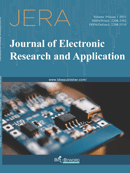Abstract
Computed tomography (CT) scan diagnostics procedures adopt the use of image information retrieval system with the help of radiographer’s expertise. However, this technique is prone to errors. Significant height of accuracy is required in healthcare decision support, as 20% of CT scans are associated with error. The application of artificial intelligence (AI) can improve performance level, mitigate human error, and enhance clinical decision support in the context of time and accuracy. The study introduced machine learning algorithm to analyze stream of anonymous CT scans of kidney. The research adopted deep learning approach for segmentation and classification of kidney stone (renal calculi) images in Python (with Keras and TensorFlow) environment. A control volume of data along with 336 kidney stone images were used to train the deep learning network with 10 testing images. The training images were divided into two sets (folders) as follows; one was labeled as STONE (containing 167 images) and the other as NO-STONE (containing 169 images); 10 iterations were performed for model training. The network layers were structured as input layer in the following with 2-D convolutional neural network machine learning (CNN-ML), ReLU activation, Maxpooling, and fully connected (dense) layer including the sigmoid activation layer. The training adopted a batch size of 8 with 10% validation. The output result, upon testing the model, has an accuracy of 90%, sensitivity value of 80% and effectiveness of 89%. The segmentation and classification algorithm model could be embedded in future CT diagnostic procedure to enhance medical decision support and accuracy.
References
Zu Berge C, Ulrich C, 2016, Real-time Processing for Advanced Ultrasound Visualization - Computer Aided Medical Procedures, Technische Universität München, Germany.
Ramya S, Radha N, 2016, Diagnosis of Chronic Kidney Disease Using Machine Learning Algorithms. International Journal of Innovative Research in Computer and Communication Engineering, 4(1): 812-820.
Sadaf F, Shafiya S, Chandini AH, et al., 2018, Chronic Kidney Disease and Stage Detection Using Machine Learning Classifiers, Department of CSE, Vidya Vikas Institute of Engineering and Technology, Mysuru, Karnataka. https://doi.org/10.21467/proceedings.1.60
Huang Q, Zhang F, Li X, 2018, Machine Learning in Ultrasound Computer-Aided Diagnostic Systems: A Survey. Hindawi BioMed Research International, 2018: 5137904. https://doi.org/10.1155/2018/5137904
Thein N, Adji TB, Hamamoto K, et al., 2019, Automated False Positive Reduction and Feature Extraction of Kidney Stone Object in 3D CT Images. International Journal of Intelligent Engineering and System, 12(2): 62-73. https://doi.org/10.22266/ijies2019.0430.07
Ebrahimi S, Mariano VY, 2015, Image Quality Improvement in Kidney Stone Detection on Computed Tomography Images. Journal of Image and Graphics, 3(1): 40-46.
Freedman D, Radke RJ, Zhang T, et al., 2005, Model-Based Segmentation of Medical Imagery by Matching Distributions. IEEE Transactions on Medical Imaging, 24(3): 281-292.
Udekwe C, Ponnle A, 2019, Application of Cardinal Points Symmetry Landmarks Distribution Model to B-Mode Ultrasound Images of Transverse Cross-section of Thin-walled Phantom Carotid Arteries. European Journal of Engineering Research and Science. 4(12): 96-101. https://doi.org/10.24018/ejers.2019.4.12.1656
OpenCV documentations, 2020, OpenCV-Python Tutorials: Image Processing in OpenCV: Smoothing Images. https://docs.opencv.org/master/d4/d13/tutorial_py_filtering.html (Accessed April 4, 2020).
Nixon M, Aguado A, 2019, Feature Extraction and Image Processing for Computer Vision, Academic Press.
Sengupta S, 2003, Neural Network and Application (Lecture Series Video), Department of Electronics and Electrical Communication Engineering I. I. T, Kharagpur.
